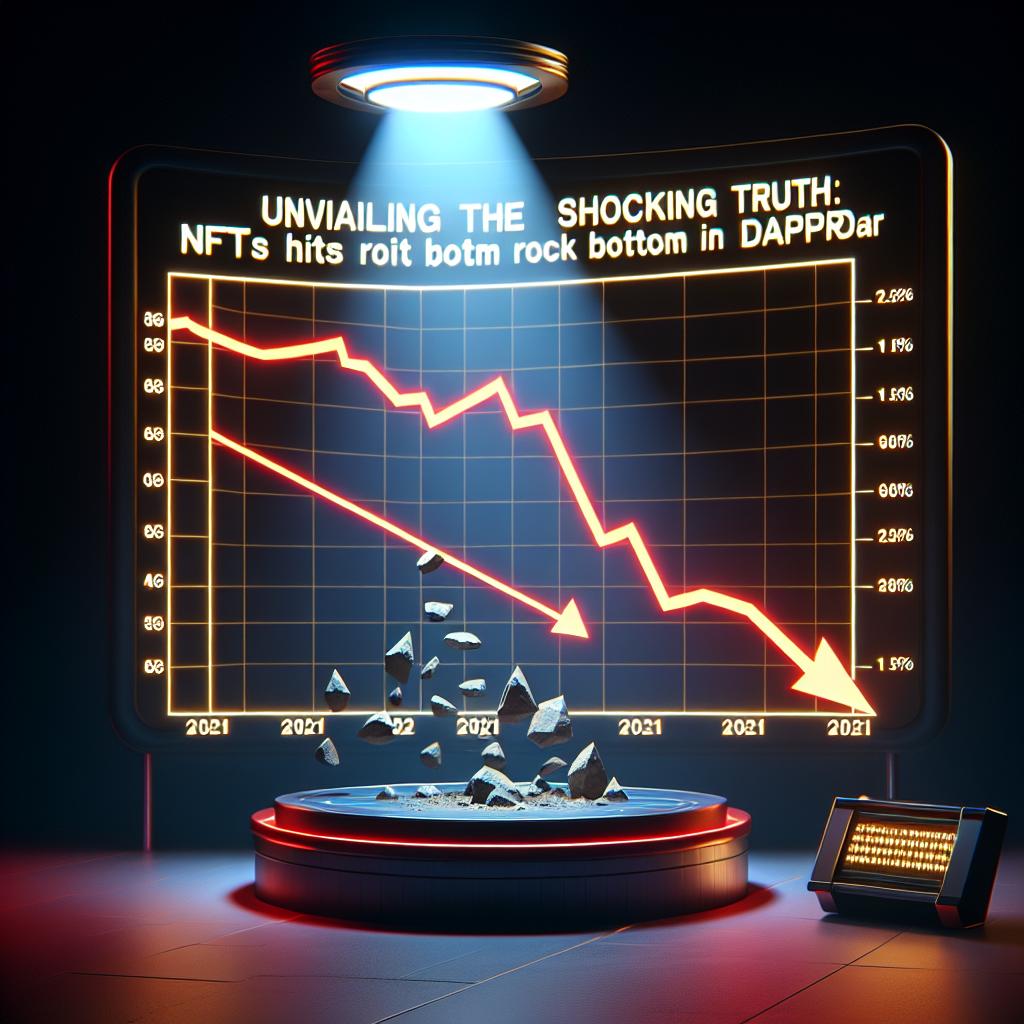Highlights:
– NFT market hit a low last year, seeing a 20% drop in trading and sales volumes according to DappRadar.
– The decline marked the worst performance since 2020.
– Insights suggest challenges for the NFT sector despite its initial hype.
Challenges in the NFT Market: A Closer Look
The Non-Fungible Token (NFT) market experienced a significant slump last year, as highlighted by a recent report from DappRadar. Trading and sales volumes in the NFT space plummeted by almost 20% compared to the previous year, painting a grim picture for the industry. This decline marks the most substantial setback for NFTs since 2020, reflecting a challenging period for digital asset trading.
Despite the initial hype surrounding NFTs and their potential as a game-changer in the digital economy, the recent data reveals underlying challenges that the market faces. Factors such as market saturation, fluctuating interest, and evolving consumer preferences may have contributed to the decline in trading and sales volumes within the NFT sector. This downturn raises questions about the sustainability and future growth trajectory of NFTs in the broader ecosystem.
Exploring the Root Causes
Delving deeper into the reasons behind the NFT market’s poor performance, several key factors come to light. One significant aspect is the oversaturation of the market with a plethora of NFT offerings, leading to increased competition and diluted value propositions. Additionally, the lack of regulation and standards in the NFT space has raised concerns about authenticity, ownership rights, and overall market credibility, deterring potential investors and collectors.
Moreover, the shift in consumer behavior and preferences towards more tangible assets in times of economic uncertainty could also be influencing the downturn in NFT trading and sales volumes. As investors seek stability and traditional investment options, the speculative nature of NFTs may face challenges in attracting sustained interest and capital inflows.
Addressing the Future
Looking ahead, the NFT market may need to adapt and evolve to overcome the current obstacles and regain momentum. Implementing robust quality controls, establishing industry standards, and enhancing transparency could help build trust and credibility among stakeholders. Furthermore, fostering innovation, diversifying use cases, and exploring partnerships across industries may unlock new opportunities for growth within the NFT ecosystem.
Despite the setbacks faced by the NFT market, the underlying technology and concept of digital ownership still hold immense potential. By addressing the challenges head-on and fostering a conducive environment for sustainable growth, the NFT sector could pave the way for a more resilient and dynamic digital asset landscape in the future.
Conclusion
In conclusion, the recent decline in trading and sales volumes within the NFT market underscores the need for critical evaluation and strategic adaptations to ensure long-term viability. As the industry navigates through challenges and seeks to redefine its value proposition, the road ahead for NFTs remains uncertain yet ripe with possibilities. How can stakeholders collaborate to drive innovation and reshape the NFT market? What regulatory measures are necessary to instill confidence and protect investors in the digital asset space? How might the convergence of NFTs with other emerging technologies shape the future of the digital economy? These questions invite further exploration and dialogue as the NFT market charts its course in an ever-evolving landscape.
Editorial content by Charlie Davis


